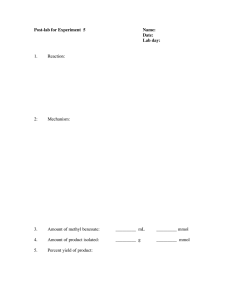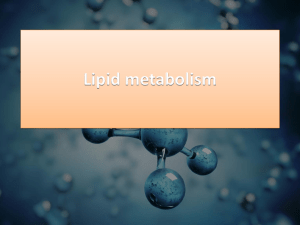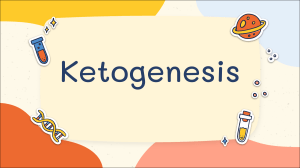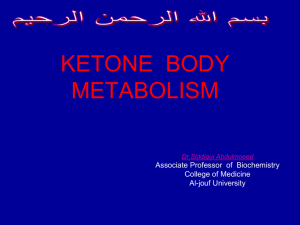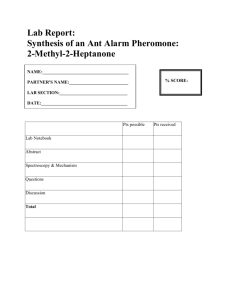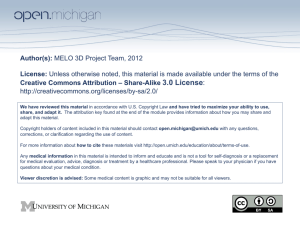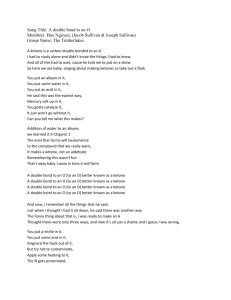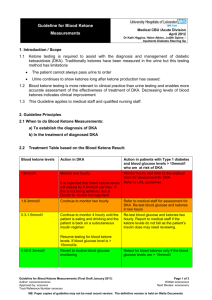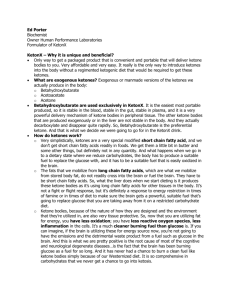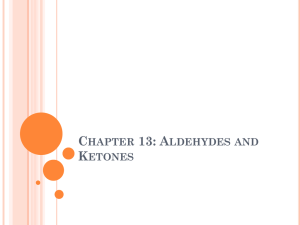Alcoholic Ketoacidosis
advertisement
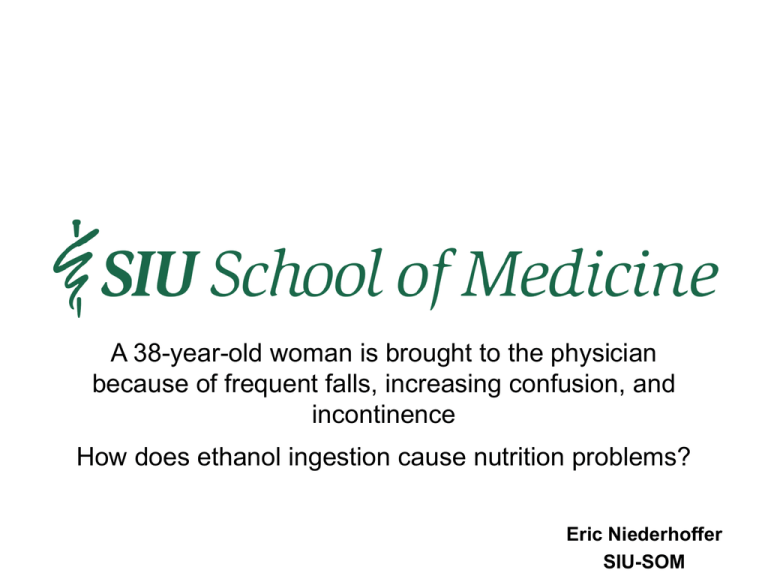
A 38-year-old woman is brought to the physician because of frequent falls, increasing confusion, and incontinence How does ethanol ingestion cause nutrition problems? Eric Niederhoffer SIU-SOM Alcoholic Ketoacidosis • Ketone body processing overview • Ketogenesis and ketone body utilization • Clinical features Ketone Body Processing Overview Energy for the Brain and Nerves TAG Epinephrine Norepinephrine HSL Ketone Bodies FA adipose tissue Thr Leu Phe Tyr Ile Lys Trp muscle Albumin ketogenesis β-oxidation AT αKA liver Ketogenesis and Ketone Body Utilization TAG Generates lots of ATP β-oxidation hepatocyte mitochondrion Acetyl CoA Ile, Thr Acetyl CoA AA CoA thiolase AACoA Lys, Trp HMG CoA synthase HMGCoA AACoAT Suc AACoA SCoA Leu HMG CoA lyase AA TCA 3HBDH Tyr, Phe 3HB NADH NAD+ Acetone 3KACoAT AA 3HBDH 3HB NADH NAD+ neuron mitochondrion Clinical Features (H&P) • History (Typical symptoms reflect poor nutritional status from long-term alcohol abuse) • poor nutrition • volume depletion • ketone bodies buildup Nausea, vomiting, and abdominal pain (each found in 60-75% of patients) Dyspnea, tremulousness, and/or dizziness (10-20% each) Muscle pain, diarrhea, syncope, and seizure (1-8% each) • Physical examination Tachycardia, tachypnea, and/or abdominal tenderness (30-40% each) Hypotension, hypothermia, fever, abdominal distention, rebound tenderness, hepatomegaly, ascites, and/or heme-positive stools (1-15% each.) Clinical Features (Laboratory Studies) • Arterial blood gas Look for Macid, may have mixed acid-base disorder (Macid from ketone formation, Malk from vomiting/volume depletion, Ralk secondary to hyperventilation) • Serum ketones Order specific test of [3HB]; ([3HB]/[AA] > 5) • Glucose and electrolytes Decreased, normal, or increased serum [Glc] (in DKA, serum [Glc] increased) Increased anion gap Increased serum [lactate] Increased serum [urea nitrogen] and [creatinine] • Complete blood count Looking for anemia, intravascular volume depletion • Liver and pancreatic function tests Total bilirubin, ALT, AST, LDH, AP, PA, PL • Alcohol levels Patient may have decreased drinking; generally does not change approach Review Questions • What are ketone bodies? • Which amino acids are ketogenic? • How are ketone bodies generated (substrates, enzymes, pathways, location)? • How are ketone bodies metabolized (enzymes, pathways, location)? • What is the effect of NADH levels on ketone bodies? • How does the metabolism of ketone bodies correlate with clinical findings?
